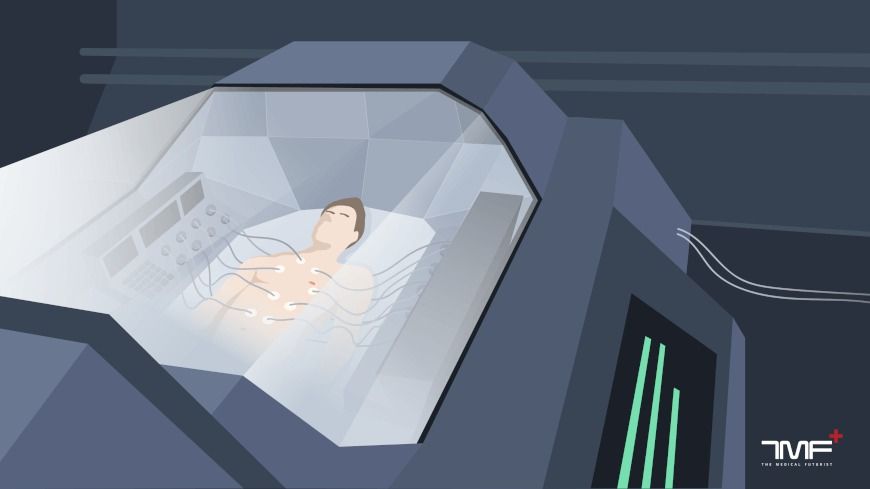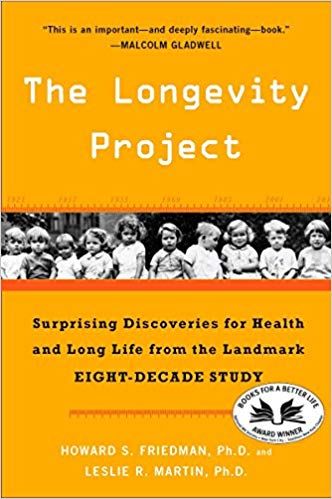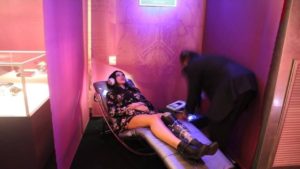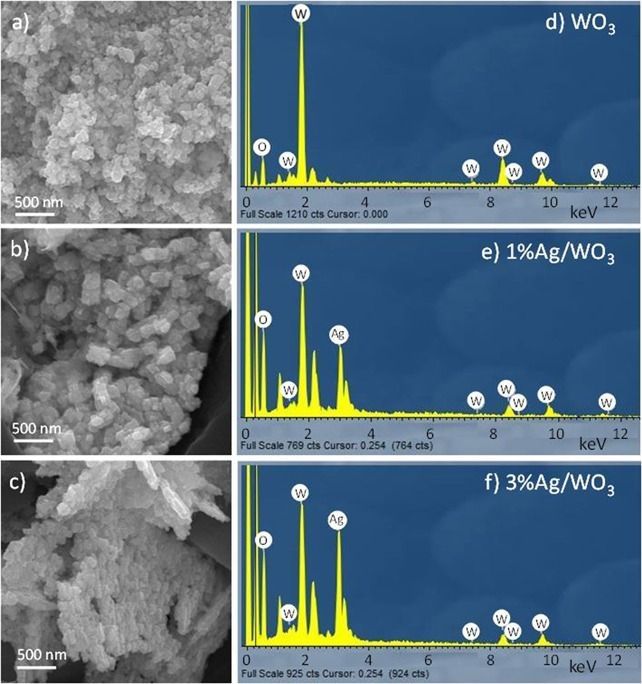Archive for the ‘health’ category: Page 346
Surprising discoveries for health and long life.
“An extraordinary eighty-year study has led to some unexpected discoveries about long life.”
-O, The Oprah Magazine
Oct 16, 2018
Bioquark Inc. — Real Bodies — Ms. Chiara Bordi — HealthQe — QantiQa — Ira Pastor
Posted by Ira S. Pastor in categories: aging, biological, biotech/medical, cryonics, DNA, futurism, genetics, health, science, transhumanism
Exciting visitor at the Real Bodies (https://www.realbodies.it/) exhibit!
The lovely Ms. Chiara Bordi (https://www.facebook.com/Chiara-Bordi-474572166390000/), Miss Italia 3rd place runner up (aka the “Bionic Beauty”) stopping by to visit our associates at HealthQE (www.healthqe.cloud), and QantiQa (https://www.qantiqa.com/), to test out their new Musyke device
Bio-mechanics and Bio-acoustics
Two critical components in the regeneration, repair, and rejuvenation equation, and part of the integrated age-reversal paradigm of Embrykinesis at Bioquark Inc.- (www.bioquark.com)
Oct 16, 2018
Coalition says new autism guidelines won’t affect NDIS access
Posted by Genevieve Klien in categories: biotech/medical, health, neuroscience
Fletcher told the ABC the guidelines were developed in consultation with people living with autism, researchers and doctors, and had been approved by the National Health and Medical Research Council.
“It does not change what the NDIS does and indeed it may well be that there are people who, today, would not be diagnosed who will be diagnosed,” he said. “That will be a judgment for clinicians and medical profession and the NDIS will continue to do what it does, which is make an assessment of the impairment that somebody suffers as a result of a disability. Is it likely to be permanent and lifelong? Is it significant? What impact does it have on the functioning?”
Dr Wenn Lawson, the co-chair of the Australian Autism Research Council, said a consistent assessment and diagnosis process for autism meant people would be able to access more appropriate supports.
Continue reading “Coalition says new autism guidelines won’t affect NDIS access” »
Oct 15, 2018
Photo-catalytic Killing of HeLa Cancer Cells Using Facile Synthesized Pure and Ag Loaded WO3 Nanoparticles
Posted by Genevieve Klien in categories: biotech/medical, genetics, health, nanotechnology
The cancer is a group of diseases characterized by the uncontrolled growth and spread of abnormal cells, and in most of the cases develop into malignant masses of tissues called tumors, and it is the leading causes of mortality and a major public health challenge worldwide. In normal body, genes in the cell nucleus, containing long strings of DNA (deoxyribonucleic acid) regulate the controlled division and function of cells and any damage to DNA causes the mutation of genes, which in turn triggers the uncontrolled division of abnormal cells, leading to the damage of vital organs. Cancer cells can detach from the original mass of tumor and migrate to new locations through blood and lymphatic system and also cancer cells produce enzymes that are capable of breaking the normal cells. For cancer diagnostics, the conventional histopathological and radiological examinations are still used for evaluating the clinical and pathologic staging, needed for cancer treatments. Depends on the stage of cancer development, different treatment options like chemotherapy, radiation therapy, stem cell transplant, immunotherapy, hormone therapy, targeted drug therapy and surgery are advised. The major disadvantages of the available advanced treatment options include non localized invasion to other body parts, intolerable cytotoxicity, unsystematic distribution of antitumor agents, immune to chemical agents, low bioavailability and limited option to evaluate the tumor cell response to therapies4,5. In spite of the drawbacks of these advanced treatment options, cancer is curable if it is diagnosed at an early stage.
Phototherapy has been used for the treatment of jaundice, cancer, dermatological conditions, and ophthalmological disorders by simply using the light of certain selected wavelength. Photodynamic therapy, on the other hand is a method of photosensitizing the action of drugs to kill cancer cells, but the major drawback of this treatment is that most of the drugs used for photodynamic therapy remain activated for a long time, leading to overdose to damage non cancer cells. In the photo-catalytic process, no drug is used, instead the nontoxic semiconductor photo-catalyst like WO3 generates electron hole pairs, when it is exposed to the light of appropriate wavelength and these photo-generated charge carriers mediate oxidation and reduction reactions in the cancer cell to eliminate them.
Oct 9, 2018
Bioquark Inc. — Real Bodies Milano Exhibit — Ira Pastor
Posted by Ira S. Pastor in categories: aging, bioengineering, biotech/medical, cryonics, futurism, genetics, health, life extension, science, transhumanism
Continue reading “Bioquark Inc. — Real Bodies Milano Exhibit — Ira Pastor” »
Oct 8, 2018
A Brain Scientist Who Studies Alzheimer’s Explains How She Stays Mentally Fit
Posted by Genevieve Klien in categories: biotech/medical, health, neuroscience
Best Brain Game To Stave Off Alzheimer’s Could Be Your Job : Shots — Health News Alzheimer’s prevention specialist Jessica Langbaum says that like most working people she gets plenty of mental exercise without playing crossword puzzles or brain games. She says work is the key.
Oct 5, 2018
How I designed a space outpost
Posted by Sidney Clouston in categories: food, habitats, health, space travel
As a Master’s student at University of Houston’s Sasakawa International Center for Space Architecture (SICSA), I was exposed to many interesting aspects of space exploration. One that I’m particularly intrigued about is the daily lives of astronauts, and their most mundane activities — how they sleep, eat, shower, exercise, work, etc. When the time came to choose what to focus on for my design thesis, I knew it would have something to do with habitation, community, and daily lives in space.
My undergrad was in architecture and urban studies with an equal emphasis on both. This gave me an understanding of how dwellings changed throughout the centuries in relation to the evolution of cities. I think in most cases, our definition of “home” is very intertwined with our definition of “city”. And I believe as humans set sail for the stars, this intertwining will stay strong. What defines a home and a city varies greatly from culture to culture, and changes with time. However, in a broad sense, a home is for your personal and intimate activities, alone or with close family members, and a city is a collection of private and public areas where the community can interact and coexist.
Oct 4, 2018
New Weapon Against Gruesome Venomous Snakebites Is Invisible to the Eye
Posted by Genevieve Klien in categories: biotech/medical, health, nanotechnology
When it comes to venomous snake bites, time is tissue. Even non-fatal snake bites still rapidly kill skin and muscle in a gruesome process called necrosis, often leaving victims permanently disfigured. In an effort to help reduce the global health burden of these bites, a team of scientists has developed an antivenom cocktail that saves tissue after a snake bite, sparing survivors a lifetime of disability.
In a paper published Thursday in the journal PLOS Neglected Tropical Diseases, researchers demonstrate that their formula, when injected into mice that had been exposed to venom from a black-necked spitting cobra (Naja nigricollis), protected against any tissue-killing effects. What’s unique about their new treatment is that it’s not made up of any one substance but a mixture of nanoparticles, which can target the individual compounds that make up a snake’s poison.
“If this is achieved, then the progression of this local necrosis would be halted, and then the person can be transported to a health facility to receive the antivenom, but the local tissue damage would have been controlled and the frequency of permanent tissue damage and sequelae would be reduced,” José María Gutiérrez, Ph.D.. a senior professor of microbiology at Instituto Clodomiro Picado (the University of Costa Rica) and one of the paper’s authors, tells Inverse.
Continue reading “New Weapon Against Gruesome Venomous Snakebites Is Invisible to the Eye” »
Oct 4, 2018
A brief jog sharpens the mind, boosting attentional control and perceptual speed. Now researchers are figuring out why
Posted by Genevieve Klien in categories: health, neuroscience
By Christian Jarrett. The cognitive benefits of brief exercise seem to be due to how it makes us feel more energetic.
















